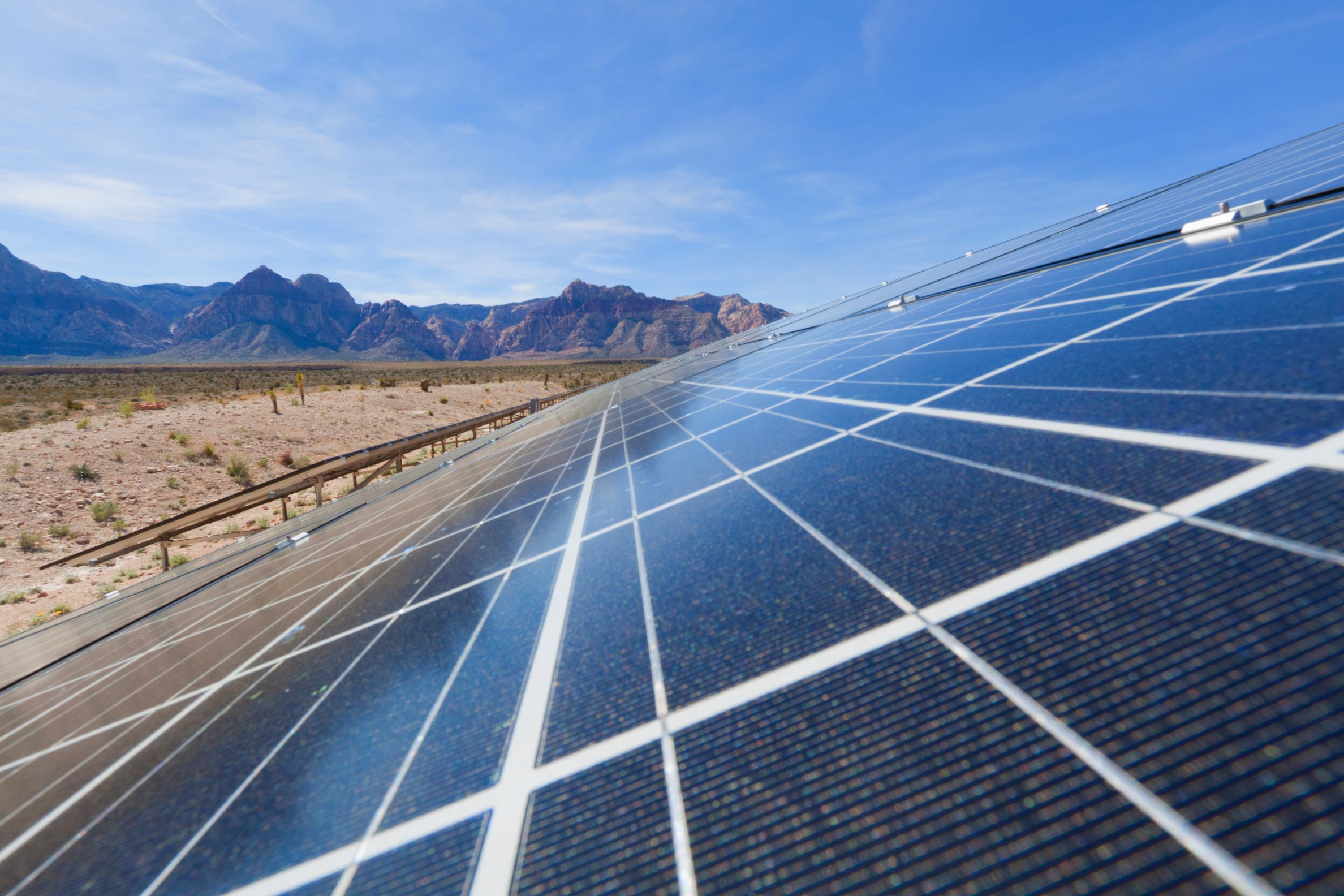Brian McCowan, Zondits staff, 2/28/2024
The Bureau of Land Management (BLM) has revised its goals for expanding solar energy projects on public lands throughout the western United States and introduced a new solar development “roadmap” to help achieve them.
The revised goals and roadmap are part of the Biden administration’s efforts to establish a net-zero electric grid by 2035. The BLM, a division of the Department of the Interior, states that the roadmap will streamline the siting and permitting procedures for solar projects on federal lands. Solar developers and clean energy advocates have long criticized such procedures for needlessly delaying solar projects.
According to a BLM press release, the Bureau also announced “next steps” progress on several solar projects in Arizona, California, and Nevada. These projects are slated to produce 1,700 megawatts of generation coupled with 1,300 megawatts of battery storage capacity. BLM Director Tracy Stone-Manning stated, “Our public lands are playing a critical role in the clean energy transition—and the progress the Bureau of Land Management is announcing today on several clean energy projects across the West represents our continued momentum in achieving those goals. Investing in clean and reliable renewable energy represents the BLM’s commitment to building a clean energy economy, tackling the climate crisis, promoting American energy security, and creating jobs in communities across the country.”
The BLM established the Western Solar Plan in 2012 to promote and guide solar development in areas of Arizona, California, Colorado, Nevada, New Mexico, and Utah with high solar potential and low resource conflicts. The BLM manages land that is used for many purposes including grazing, logging, recreation, mining, and fossil fuel extraction. An update of the 2012 plan, titled the Utility-Scale Solar Energy Programmatic Environmental Impact Statement, has been published in draft form following a series of stakeholder and public scoping meetings.
In addition to streamlining the project approval processes, the revised plan expands the scope of the solar potential analysis to include Idaho, Montana, Oregon, Washington, and Wyoming. Working together with the Department of Energy’s National Renewable Energy Laboratory, the BLM estimates that 700,000 acres of public land will be required to meet the stated goals. Arizona alone has over 28 million acres of federally managed public lands.
The roadmap identifies 22 million acres of land for potential solar development across the multi-state region and prioritizes areas with minimal conflict with other sanctioned uses of public lands and less potential for disrupting sensitive natural resources. Additional factors include proximity to existing transmission lines and positive engagement with Tribal and other public entities.
The next steps in the process will be to seek further public input before releasing a Final Programmatic Environmental Impact Statement and Record of Decision. The public is invited to submit written comments through April 18, 2024. The BLM is also hosting public meetings in Western states and virtual meetings in February and March. Copies of the draft proposals, comment forms, and public meeting schedules are available at EplanningUi (blm.gov).

